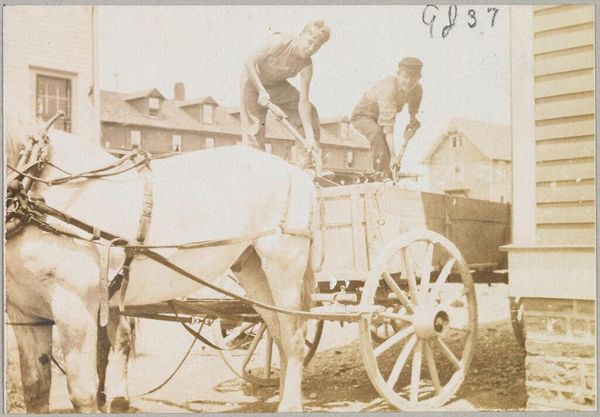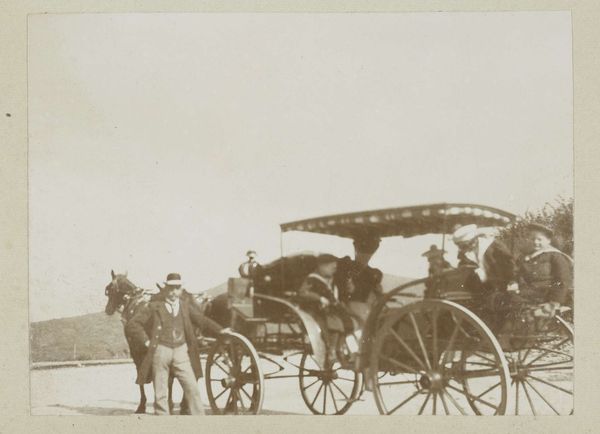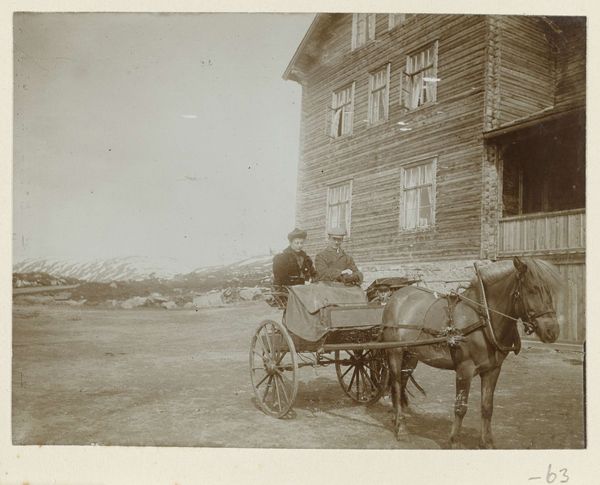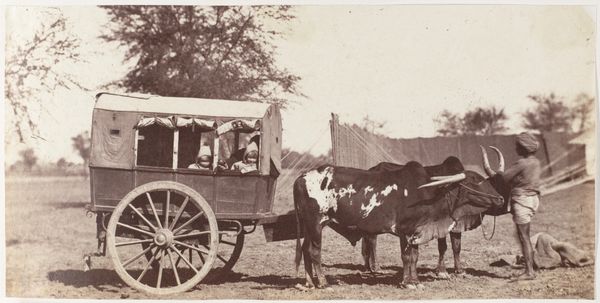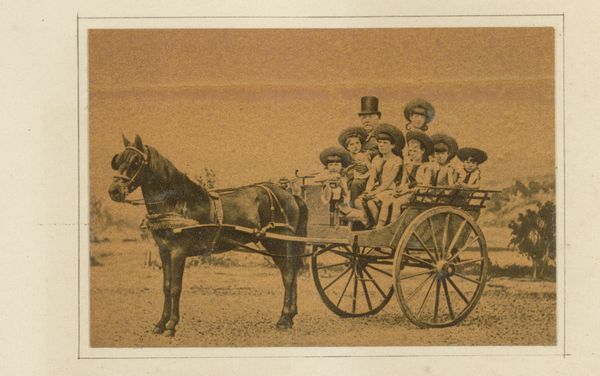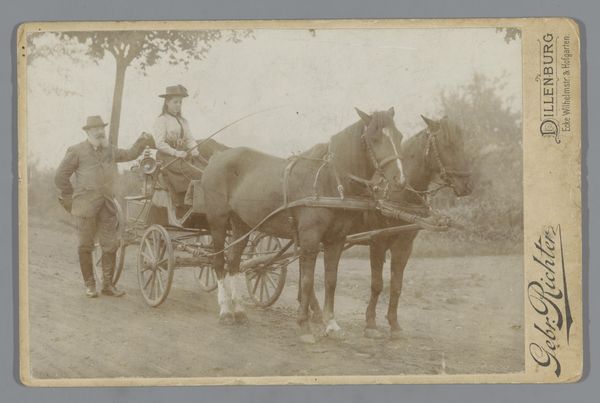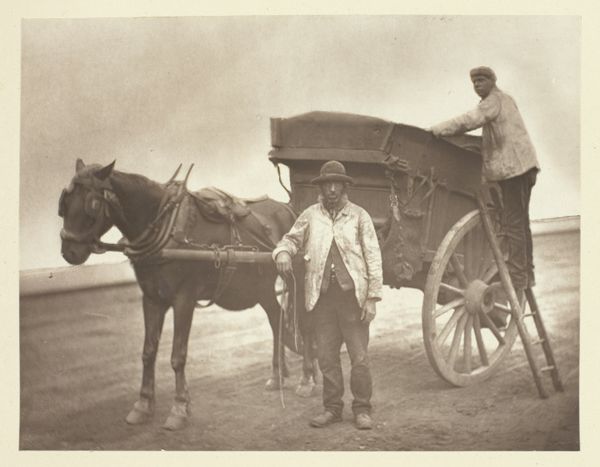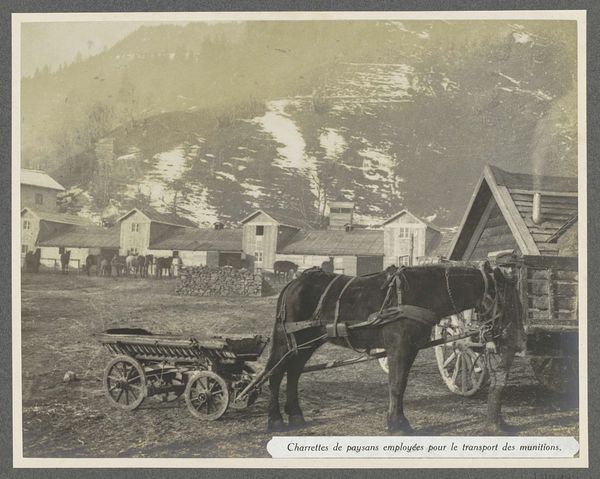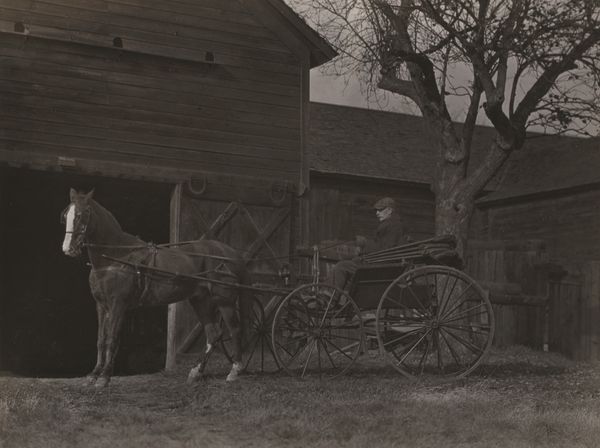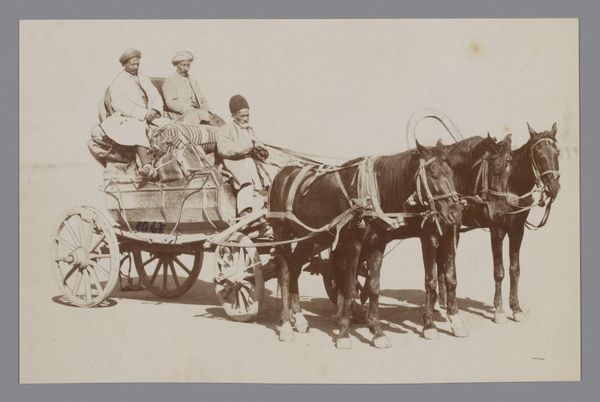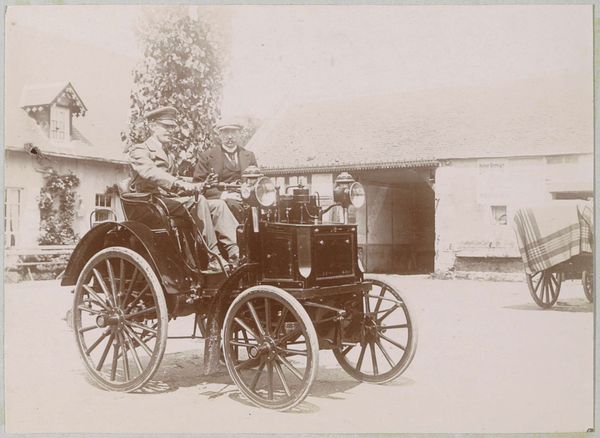
Horse and Buggy Days c. 1930
Dimensions: image: 16.6 x 24 cm (6 9/16 x 9 7/16 in.) mount: 50.6 x 40.5 cm (19 15/16 x 15 15/16 in.)
Copyright: CC0 1.0
Curator: Joseph Woodson Whitesell's image, titled "Horse and Buggy Days," really speaks to a specific cultural moment. It's a snapshot of a family, seemingly caught between worlds. Editor: It's stark, isn’t it? The grayscale palette lends it an air of austerity, but I'm immediately drawn to the subjects' expressions—they're so contained. I'm curious about their relationships and how they're performing in this scene. Curator: The very act of posing for such photographs spoke volumes. It was about crafting a narrative, a performance of social standing and family values. The horse and buggy were symbols of both transportation and class. Editor: Absolutely. How can we understand the class implications here? Was Whitesell engaging with the social dynamics of his time, perhaps commenting on the changing roles and expectations of rural families? Curator: He was definitely documenting a shifting landscape. The presence of the log cabin in the background grounds this family in a rural context. The photo reveals a family using the means available to them for mobility. Editor: Right, it's tempting to see the horse and buggy as a mere vestige of a bygone era, but this image forces us to recognize it as a symbol of resilience and ingenuity. I am left thinking about how communities navigate their social positions. Curator: Exactly, and it allows us to contemplate the intersections of class, gender, and race as they were embodied and performed through objects and self-presentation. Editor: I agree. Thinking about the social function of the photo itself is the key to unpacking a narrative of power relations. I leave with an important reflection on visual performance.
Comments
No comments
Be the first to comment and join the conversation on the ultimate creative platform.
